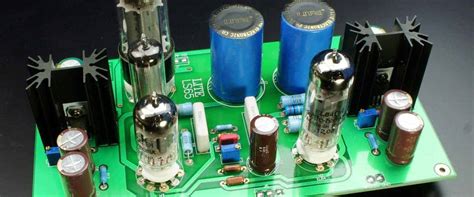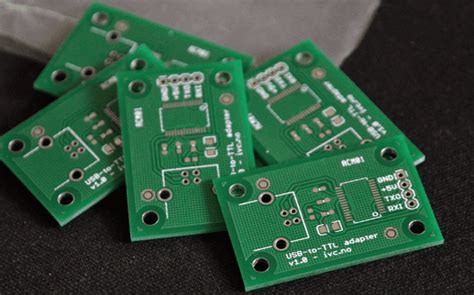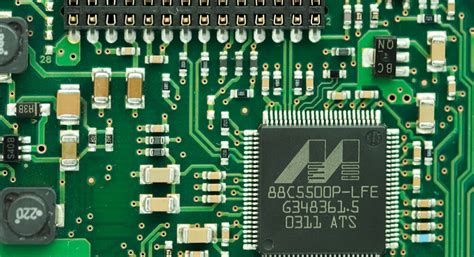Buy pcb board
Top Tips for Choosing the Right PCB Board for Your Project
When embarking on an electronics project, selecting the right printed circuit board (PCB) is a critical step that can significantly influence the success of your endeavor. The PCB serves as the backbone of your electronic device, providing the necessary support and connectivity for various components. Therefore, understanding the key factors to consider when purchasing a PCB board is essential for both novice and experienced engineers alike.
To begin with, it is important to assess the specific requirements of your project.
This involves determining the size and shape of the PCB, which should align with the physical constraints of your device. Additionally, consider the number of layers needed. Single-layer PCBs are suitable for simple circuits, while multi-layer boards are ideal for more complex designs that require additional routing space and functionality. By clearly defining these parameters, you can narrow down your options and focus on boards that meet your project’s needs.
Another crucial aspect to consider is the material composition of the PCB.
The most common material used is FR-4, a fiberglass-reinforced epoxy laminate that offers a good balance of durability and cost-effectiveness. However, for high-frequency applications, materials such as Rogers or Teflon may be more appropriate due to their superior electrical properties. Understanding the material requirements of your project will ensure that the PCB can withstand the environmental conditions and performance demands it will encounter.
Furthermore, the choice of PCB manufacturer plays a significant role in the quality and reliability of the final product.
It is advisable to select a manufacturer with a proven track record and positive customer reviews. Additionally, consider their manufacturing capabilities, such as the precision of their drilling and etching processes, as well as their ability to meet your specific design specifications. A reputable manufacturer will also offer quality assurance measures, such as testing and inspection services, to ensure that the PCB meets industry standards.
In addition to these technical considerations, cost is an inevitable factor in the decision-making process.
While it may be tempting to opt for the cheapest option available, it is important to weigh the cost against the quality and reliability of the PCB. Investing in a high-quality board can prevent costly failures and rework in the future, ultimately saving time and resources. Therefore, it is prudent to establish a budget that reflects the importance of the PCB in your project and to seek a balance between cost and quality.
Moreover, it is beneficial to consider the availability of technical support and customer service from the PCB supplier.
A supplier that offers comprehensive support can assist with design challenges, provide valuable insights, and help troubleshoot any issues that may arise during the development process. This support can be invaluable, particularly for complex projects or when working with new technologies.
In conclusion, choosing the right PCB board for your project involves a careful evaluation of several factors, including size, material, manufacturer, cost, and support. By taking the time to thoroughly assess these elements, you can ensure that the PCB you select will meet the demands of your project and contribute to its overall success. As technology continues to evolve, staying informed about the latest advancements in PCB design and manufacturing will further enhance your ability to make informed decisions and achieve optimal results.
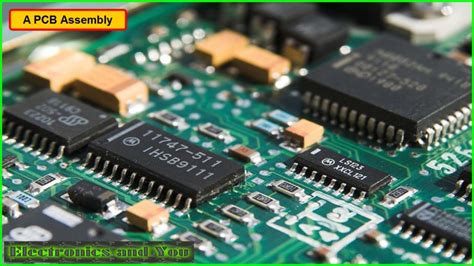
Understanding the Different Types of PCB Boards Available
Printed Circuit Boards (PCBs) are the backbone of modern electronic devices, serving as the foundation upon which electronic components are mounted and interconnected. Understanding the different types of PCB boards available is crucial for anyone involved in electronics design or manufacturing. This knowledge not only aids in selecting the right type of PCB for a specific application but also ensures optimal performance and cost-effectiveness.
To begin with, single-sided PCBs are the most basic type of printed circuit boards.
They consist of a single layer of substrate material, typically fiberglass, with a thin layer of conductive copper on one side. Components are mounted on one side, and the copper traces are etched on the other. These boards are cost-effective and easy to manufacture, making them suitable for simple, low-density designs such as calculators and power supplies. However, their limited routing space restricts their use in more complex applications.
Transitioning to more advanced designs, double-sided PCBs offer a significant improvement over single-sided boards.
They have conductive copper layers on both sides of the substrate, allowing for more complex circuit designs. Components can be mounted on both sides, and vias—small holes plated with conductive material—are used to connect traces on opposite sides. This type of PCB is commonly used in applications like industrial controls and automotive electronics, where moderate complexity and density are required.
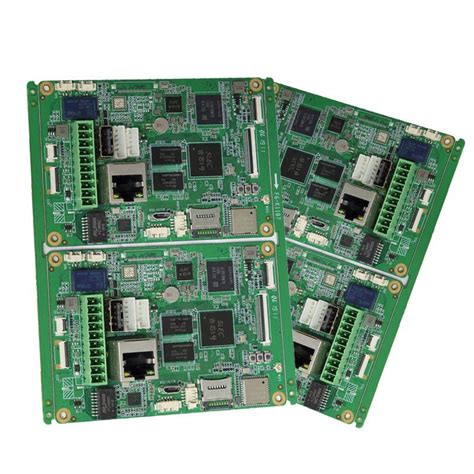
For even more complex and high-density applications, multi-layer PCBs are the preferred choice.
These boards consist of three or more layers of conductive material separated by insulating layers. The additional layers allow for more intricate designs and greater component density, making them ideal for sophisticated devices such as smartphones, computers, and medical equipment. The complexity of multi-layer PCBs requires advanced manufacturing techniques, which can increase production costs. However, their ability to support high-speed and high-frequency signals makes them indispensable in modern electronics.
In addition to these standard types, there are specialized PCBs designed for specific applications.
For instance, flexible PCBs are made from materials that allow the board to bend and flex without breaking. This flexibility is advantageous in applications where space is limited or where the board must conform to a specific shape, such as in wearable devices and flexible displays. Rigid-flex PCBs combine the benefits of both rigid and flexible boards, offering a robust solution for complex designs that require both flexibility and structural integrity.
Another specialized type is the high-frequency PCB, designed to handle signals in the gigahertz range.
These boards use materials with low dielectric loss to minimize signal distortion, making them suitable for applications like RF communication and microwave circuits. Similarly, aluminum-backed PCBs are used in high-power applications where heat dissipation is critical, such as LED lighting and power converters.
In conclusion, the variety of PCB types available today reflects the diverse needs of the electronics industry. From simple single-sided boards to complex multi-layer and specialized designs, each type serves a unique purpose. Understanding these differences is essential for selecting the right PCB for any given application, ensuring that the final product meets both performance and budgetary requirements. As technology continues to evolve, the development of new PCB materials and designs will undoubtedly expand the possibilities for electronic innovation.

How to Buy High-Quality PCB Boards on a Budget
When it comes to purchasing printed circuit boards (PCBs), finding high-quality options on a budget can be a challenging endeavor. However, with a strategic approach, it is possible to secure reliable PCBs without compromising on quality or overspending. The first step in this process is understanding the specific requirements of your project. By clearly defining the technical specifications, such as the number of layers, material type, and size, you can narrow down your options and avoid unnecessary expenses. This clarity will also help in communicating your needs effectively to potential suppliers.
Once you have a clear understanding of your requirements, the next step is to conduct thorough research on potential suppliers.
It is crucial to evaluate their reputation, experience, and customer reviews. Online platforms and forums can be valuable resources for gathering insights from other buyers who have previously worked with these suppliers. Additionally, requesting samples from multiple manufacturers can provide a tangible sense of their product quality and help in making an informed decision.
As you explore different suppliers, it is important to consider the balance between cost and quality.
While it may be tempting to opt for the cheapest option available, this can often lead to subpar products that may not meet your project’s needs. Instead, focus on finding suppliers that offer competitive pricing without compromising on essential quality standards. Negotiating with suppliers can also be an effective way to secure better deals. Many manufacturers are open to discussions on pricing, especially for bulk orders, so do not hesitate to inquire about potential discounts or special offers.
Another strategy to consider is leveraging technology to your advantage.
Online marketplaces and platforms dedicated to electronic components often feature a wide range of PCB suppliers, allowing for easy comparison of prices and features. These platforms can also offer insights into the latest industry trends and innovations, helping you make more informed purchasing decisions. Furthermore, some platforms provide user reviews and ratings, which can be instrumental in assessing the reliability and quality of different suppliers.
In addition to these strategies, it is essential to pay attention to the details of the purchasing process.
Carefully reviewing the terms and conditions, including warranty policies and return procedures, can prevent potential issues down the line. Ensuring that the supplier adheres to industry standards and certifications is also crucial in guaranteeing the quality of the PCBs. Certifications such as ISO 9001 or IPC standards are indicators of a supplier’s commitment to quality and reliability.
Finally, maintaining a good relationship with your chosen supplier can be beneficial for future purchases.
Building a rapport can lead to better customer service, priority treatment, and even more favorable pricing in the long run. Regular communication and feedback can also help the supplier understand your evolving needs, ensuring that they continue to meet your expectations.
In conclusion, buying high-quality PCB boards on a budget requires a combination of careful planning, thorough research, and strategic negotiation. By understanding your project requirements, evaluating potential suppliers, leveraging technology, and paying attention to the purchasing details, you can secure reliable PCBs without exceeding your budget. With these strategies in mind, you can confidently navigate the market and make informed decisions that align with both your technical needs and financial constraints.

The Future of PCB Boards: Trends and Innovations to Watch
The future of printed circuit boards (PCBs) is poised for significant transformation, driven by rapid technological advancements and evolving industry demands. As the backbone of modern electronic devices, PCBs are integral to the functionality and efficiency of countless applications, from consumer electronics to industrial machinery. Consequently, understanding the emerging trends and innovations in PCB technology is crucial for businesses and engineers seeking to stay ahead in a competitive market.
One of the most notable trends in the PCB industry is the push towards miniaturization.
As electronic devices become increasingly compact, there is a growing need for smaller, more efficient PCBs. This demand has led to the development of advanced manufacturing techniques, such as high-density interconnect (HDI) technology, which allows for more components to be packed into a smaller area. HDI technology not only supports the miniaturization trend but also enhances the performance and reliability of PCBs by reducing signal loss and improving thermal management.
In addition to miniaturization, the rise of the Internet of Things (IoT) is significantly influencing PCB design and manufacturing.
IoT devices require PCBs that are not only compact but also capable of supporting wireless communication and connectivity. This has led to the integration of antennas and other communication components directly onto the PCB, streamlining the design and reducing the overall size of the device. Furthermore, IoT applications often demand PCBs that can operate in diverse and challenging environments, prompting innovations in materials and coatings that enhance durability and resistance to environmental factors.
Another key innovation shaping the future of PCBs is the adoption of flexible and rigid-flex PCBs.
These types of boards offer significant advantages in terms of design flexibility and space optimization, making them ideal for applications where traditional rigid PCBs are impractical. Flexible PCBs can be bent and folded to fit into unconventional spaces, while rigid-flex PCBs combine the benefits of both rigid and flexible boards, providing robust support for components while allowing for dynamic movement. As wearable technology and other compact devices continue to gain popularity, the demand for flexible and rigid-flex PCBs is expected to grow.
Sustainability is also becoming a critical consideration in PCB manufacturing.
As environmental concerns mount, there is increasing pressure on manufacturers to adopt eco-friendly practices and materials. This has led to the exploration of biodegradable substrates and the reduction of hazardous substances in PCB production. Additionally, advancements in recycling technologies are enabling more efficient recovery of valuable materials from end-of-life PCBs, reducing waste and promoting a circular economy.
Moreover, the integration of artificial intelligence (AI) and machine learning in PCB design and manufacturing processes is revolutionizing the industry.
AI-driven design tools can optimize PCB layouts for performance and cost-effectiveness, while machine learning algorithms can predict potential manufacturing defects, improving yield and reducing production costs. These technologies not only enhance the efficiency of PCB production but also enable more complex and innovative designs.
In conclusion, the future of PCB boards is characterized by a convergence of trends and innovations that are reshaping the industry. From miniaturization and IoT integration to flexible designs and sustainable practices, these developments are driving the evolution of PCBs to meet the demands of modern technology. As these trends continue to unfold, staying informed and adaptable will be essential for those looking to capitalize on the opportunities presented by the next generation of PCB technology.

